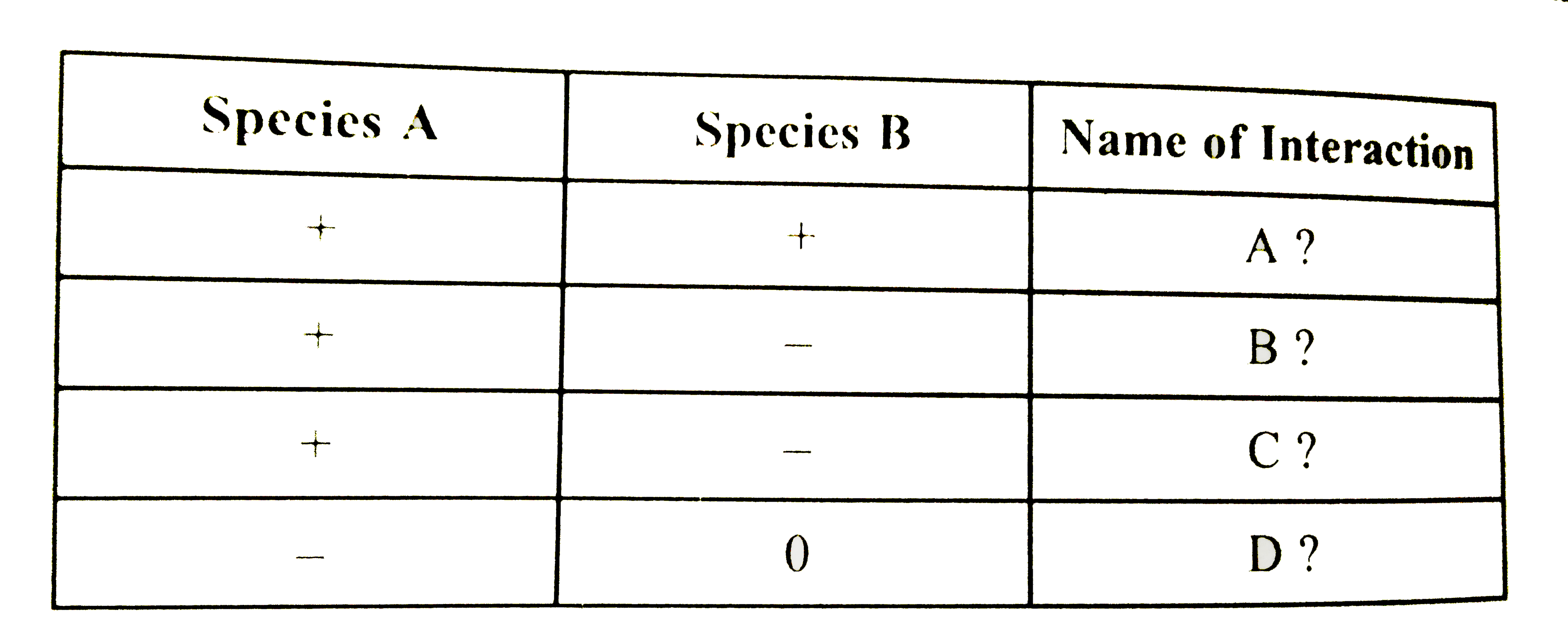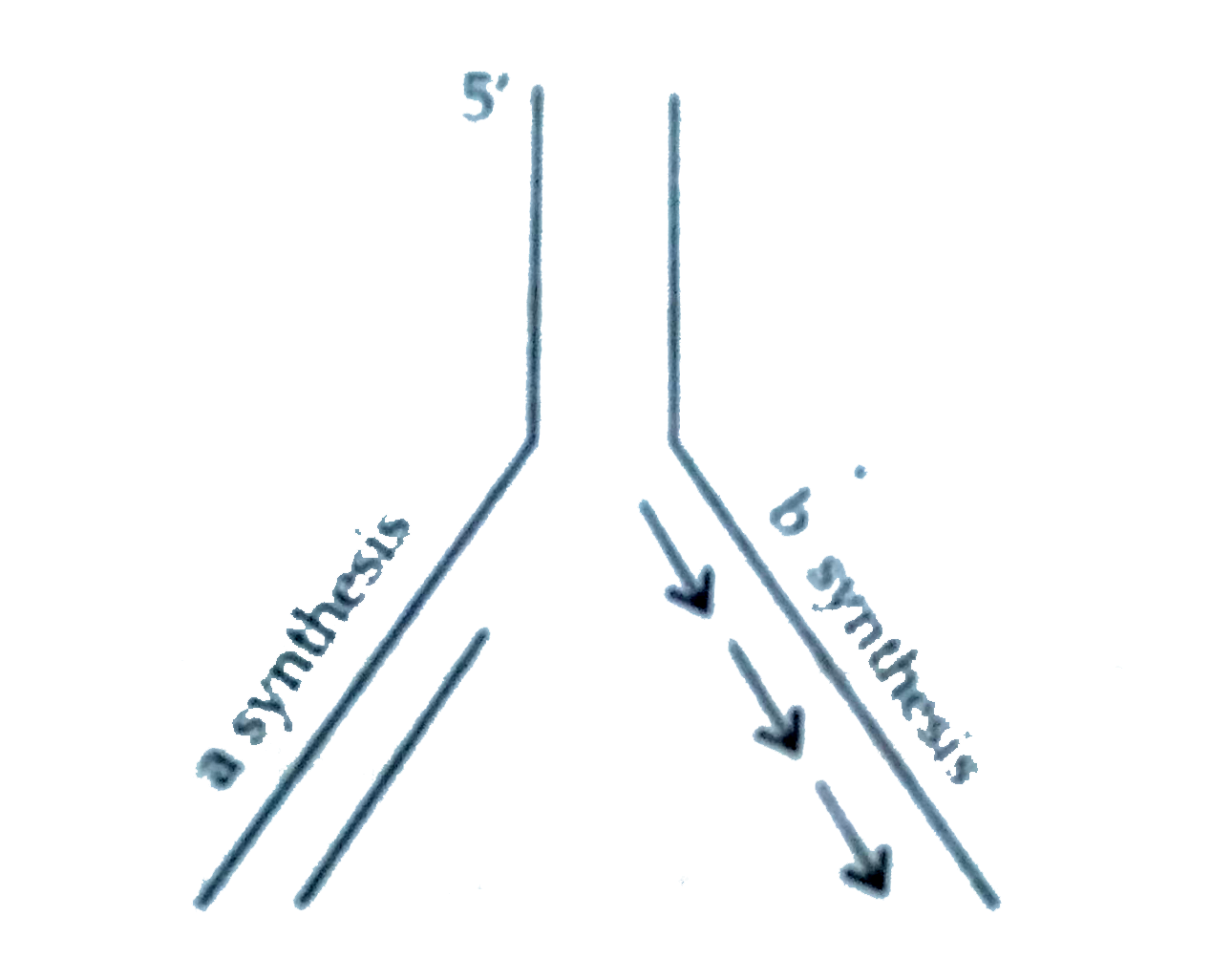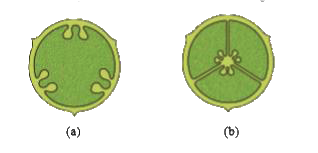Given below is a table depicting population interactions between SQPecies A and SQPecies B.
Type of interactionSQPecies ASQPecies B(a)(−)(+)(b)(+)(−)
Name the type of interactions (a) and (b) in the above table.
Justify giving three reason, how the type of interaction (b) is important in an ecological context
Video Solution
Text Solution
(a) − Amensalism
(b) − Predation
Justifications-
• Nature’s way of transferring energy fixed by plants to higher trophic levels/conduits for energy transfer.
• Keep prey population under control
• Predators help in maintaining SQPecies diversity in a community, by reducing the intensity of competition among competing prey SQPecies.
|
Updated on:21/07/2023
Topper's Solved these Questions
- BOOK - XII BOARDS PREVIOUS YEARCHAPTER - SAMPLE PAPER 2019EXERCISE - Section E Part A3videos
SAMPLE PAPER 2019
- BOOK - XII BOARDS PREVIOUS YEARCHAPTER - QUESTION PAPER 2023EXERCISE - Question51videos
QUESTION PAPER 2023
- BOOK - XII BOARDS PREVIOUS YEARCHAPTER - XII BOARDSEXERCISE - SET- I35videos
XII BOARDS
Similar Questions
Knowledge Check
- Question 1 - Select One
Which type of population interaction is found between clown fish and sea anemone?
ABrood parasitismBParasitismCMutualismDCommensalism - Question 2 - Select One
Species A(-) & species B(o) shows the following interaction:-
AAmensalism is a relationship in which one species is inhibited where as the other is unaffected.BPredationCMutulismDCompetition. - Question 3 - Select One
The interacting species (A and B) live closely together in
APredation, parasitism and competitionBMutualism, competiton and amensalismCPredation, competition and commensalismDPredation, parasitism and commensalism
Name the type of interaction seen between fig and wasps.
View SolutionWhat type of population interaction in A,B,C,D between the species A and B as per the tabular column given below .
 View Solution
View SolutionName the blank spaces a, b, c and d in the table given below
 View Solution
View SolutionStudy the figures below and identify the type of interaction between XY-XY molecules.
 View Solution
View SolutionName the types of synthesis ‘a’ and ‘b’ occurring in the replication fork of DNA as shown below:
 View Solution
View Solution


